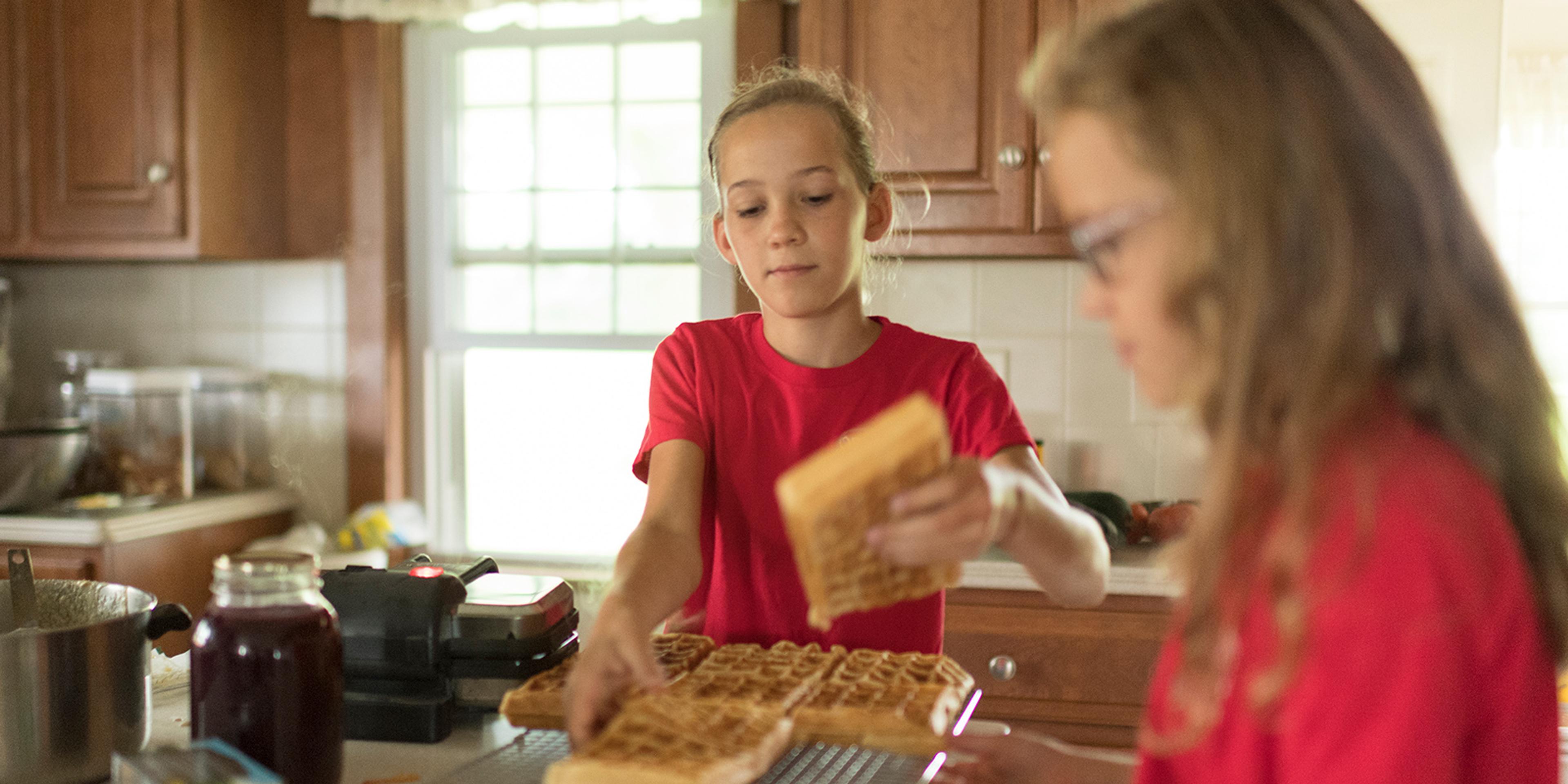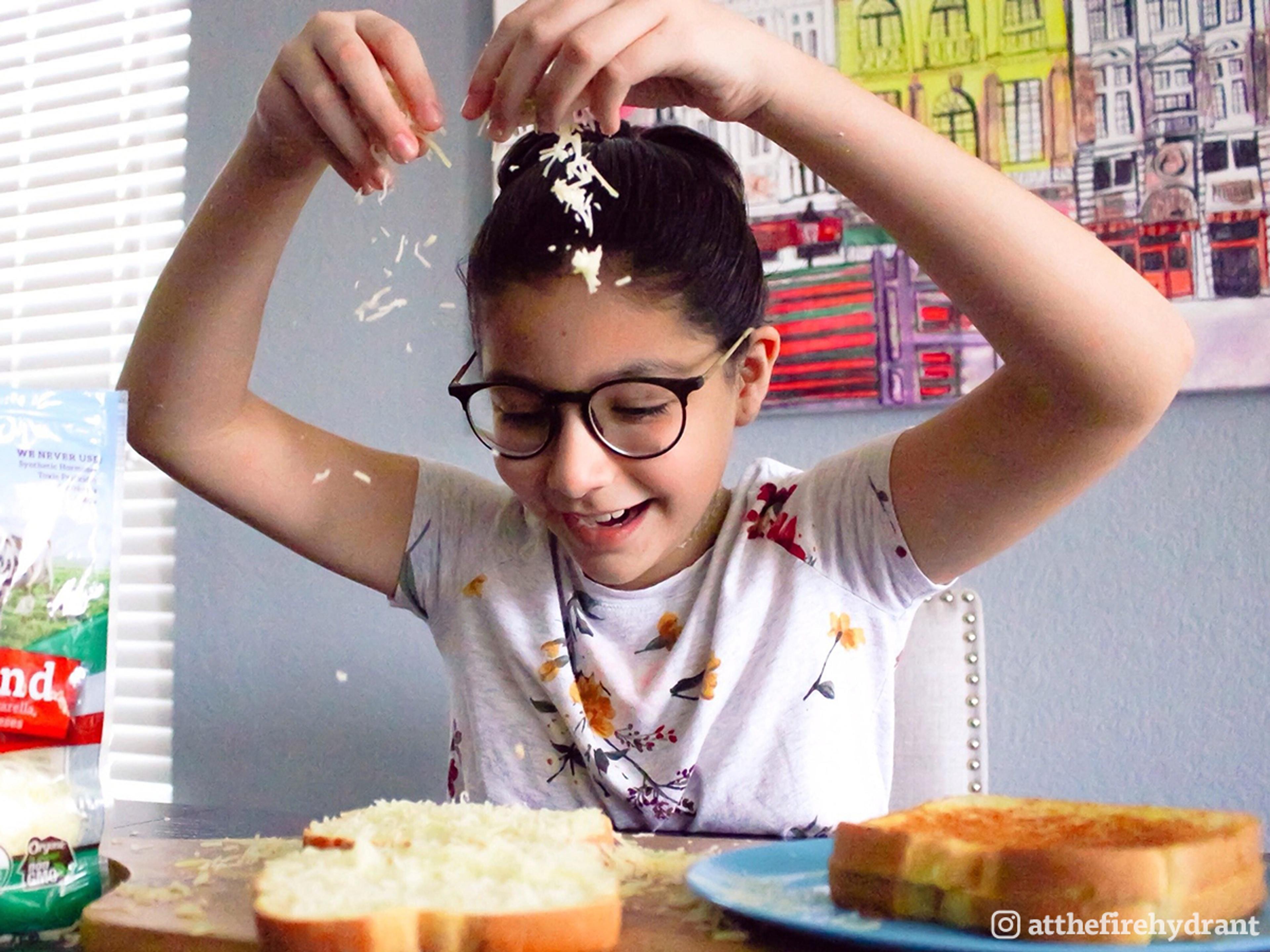
Food
Part 4: How to teach a child about their food allergy? Get them in the kitchen!
Editor’s Note: May is Allergy Awareness Month, and since dairy and eggs are common allergens, we’re sharing some helpful tips for navigating your child’s food allergy in a way that builds confidence and fosters a positive attitude toward food.
Allowing your child to take control of their meal planning and meal prep can be a fantastic way not only to teach your child about their food allergy, but also to build confidence and skills that will serve them in so many other ways.
In this final part in our four-part series, Sloane Miller, a specialist in food allergy management and author of Allergic Girl: Living Well With Food Allergies, will share her tips for getting your child involved in the kitchen and what to discuss with them during each step. In this series, we want to help you and your child create a joyful and stress-free relationship with your food.
Autonomy. Agency. Problem-solving. Creativity. Safety. These are just some of the many qualities that, from a very young age, can be encouraged in your children.
“Really?” you ask. “Those are great character traits. How?”
Get your children into the kitchen! Using one recipe as an example, we will walk through how these qualities and life skills come into play for all children, but especially for your child who’s learning to live with a food allergy.
First, find a family friendly recipe.
With your child, talk through what they like to eat and what they’d like to make for the family. Say yes to their ideas! That’s their creativity and fostering their agency over what they want to eat. Follow through with their line of thinking for the recipe they would like to make. (Organic Valley has many family friendly recipes if you need ideas!)
Here are some questions to spark your conversation:
- What about this recipe is interesting or intriguing to them?
- What ingredients are needed?
- Are these ingredients food allergy safe? If not, it’s a perfect opportunity to discuss alternatives.
- Who else would like it in the family?
Help them think through all of these questions—that’s exercising their problem-solving skills—and think through alternatives if, say, one family member wouldn’t like the finished dish. It’s also a great opportunity for non-allergic children in the household to learn about their sibling’s allergy in a practical and caring way.
You can do this with any age child, and as your child grows, it will be fun to watch their creativity and independence grow too.

Make your shopping list, together.
Now that you have an allergy-friendly recipe that everyone would like, go through the ingredient list one by one and talk through what the ingredients look and taste like. You can find pictures in books, online, or if you have the ingredient, look at it in your pantry.
This is a great time to remind your child what their allergens are, what they look like, and what the different names can be so that, as your child becomes more independent, they can determine on their own if a recipe would be safe for them and can identify their allergens on food labels when you go shopping. This resource from AAFA/KFA lists common allergens and the various alternative names under which you might find the allergen hidden on ingredient lists.
This is also a great example of agency and safety as they can choose what they are eating and how they are making it, and can take responsibility for ensuring it’s allergen-free.
Go food shopping, together.
Once you’re in the store, read the labels of processed foods and talk about what the food allergen labels look like and what they mean for your child—what is safe and what is not safe. Again, this is about agency and safety, helping a child understand what they can and cannot eat and why. (FARE has excellent guidance on reading food labels.)
This is also a great time to go through budgeting, if your child is older. Discuss how food budgeting decisions are made in your family, then compare and contrast how much something costs per unit or ounce or pound. Then have them contribute to making the decision about appropriate ingredients that fit within your food budget.
If your family has chosen to allow allergens in your home, have your children join in the responsibility for labeling groceries as “safe” and “not safe” once you’re home. As they help label and put food away, all your children will learn how to prevent cross-contact and where the “not safe” food is kept so the allergic child can avoid it.

Make your recipe, together!
Once home, follow the recipe and make your dish, letting your child help in an age-appropriate way. They can read out instructions, mix, pour, stir, taste. Or if they are a little older, show them proper knife skills, measuring skills, how to chop and dice, and of course, how to prevent cross-contact and how to clean up.
These are food safety skills as well as independent life skills. (Who knows, maybe in the future they’ll start making the family dinner on their own!) Children can help set the table, serve the food, and tell everyone about how they helped to create this masterpiece.
Involving your child in the kitchen will help them to become confident, not fearful, around food and to connect with food positively. By walking through how a recipe is chosen, finding safe ingredients, making a yummy dish, and eating it together, you are helping to create positive food memories and positive food associations for your child, and isn’t that delicious!
Read more in our 4-part series on Navigating Your Child’s Food Allergy:
Sloane Miller, MFA, MSW, LMSW, specialist in food allergy management and author, is founder and president of Allergic Girl Resources, Inc., a consultancy devoted to food allergy awareness. Ms. Miller combines a lifetime of personal experience and passion with professional expertise to connect with people about how to live safely, effectively, and joyously with food allergies. She earned her Master of Social Work at the New York University’s Silver School of Social Work and her Master of Fine Arts in Writing and Literature at Bennington College. In 2006, she started Please Don't Pass the Nuts, an award-winning blog for and about people affected by food allergies. In 2011, John Wiley & Sons published her definitive how-to guide, Allergic Girl: Adventures in Living Well With Food Allergies.
Related Articles
- Tags:
- family & kids,
- food allergies
















